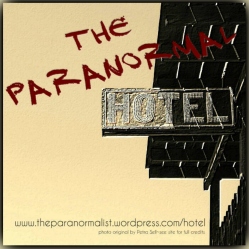Resolutions Review: How “You Need A Budget” (YNAB) helped us save $1000 in less than 3 months.
Posted: February 26, 2014 Filed under: Body Preservation, How to Pass for "Normal", My Family Album, My Paranormal Life, Uncategorized | Tags: budgeting, financial planning, life hacks, money, Renae Rude, software, The Paranormalist, YNAB, You Need A Budget 4 CommentsOn Monday, I introduced this month’s series in a post called Resolutions Review: did you get control of your weight, fitness, money, and work issues? (Plus Power Poses.) Tackling this series a bit of a stretch for a paranormal-themed blog, but less so if you understand that I define the word paranormal broadly.
Para- / par-ə / Prefix. ”Alongside, near, beyond, altered, contrary to.”
normal / nawr-muhl / Adjective. “Conforming to the standard; usual; regular; natural.”
No matter how far I stray from topics like ghosts, cryptids and mysteries, I am always thinking about how to make life better and easier for my kindred. These articles will become part of a section of the blog I’m developing, dedicated to living a (moderately) paranormal lifestyle.
There. That’s out of the way.
*****
Today, let’s take a sharp turn toward the concrete and practical and talk about money.
You can skip this next part if it’s too long and you want to get to the review of the financial planning software we’ve found. Just scroll 🙂
Here’s our backstory, told as succinctly as possible, in case you need or want to know what our situation was before YNAB:
My husband and I married at 23, and I brought him a four year old daughter as a wedding present. (Shout out to Pooka.) We were determined to live a very Ozzie & Harriett kind of lifestyle, and though he was at the beginning of a promising career as a software engineer, the paychecks didn’t stretch far enough to pay for all the “normal” things we wanted. Obviously, then, we financed the lifestyle we wanted with credit cards. (It was the early 90s.) We bought used cars (though we weren’t able to fix them when they broke.) We bought a house (though we weren’t good at or interested in home maintenance projects.) Five years later, we had a son. (Shout out to The Boy.)
But, other than my husband’s 401K, we had no savings.
Eventually of course, we realized how over-extended we were. We entered into a non-profit debt consolidation program. We decided we wanted to simplify our lifestyle, so we sold the house in town (which was falling apart anyway) and moved into a “less expensive” house, out to the country so we could be a bit more self-sustaining and finish raising the kids on a min-farm.
But, other than my husband’s 401K, we had no savings.
Over the next 5-7 years, we repaired the damage we’d done with our early credit-fueled spending. We loved the farm, though it ended up costing a LOT more than living in town had, despite the lower sticker price. Even small scale hobby farming is harder than it looks, and requires more of an investment than you’d think. (And we still weren’t good at home maintenance stuff.) Then there was the added cost of my husband’s commute, which was more than an hour each way, on good roads. (We live in Minnesota. There were many more days of bad roads than good.) But we were surviving, and our credit score had recovered. We carried little debt. We used a big bonus my husband received to almost completely pay for TWO brand new, if eminently practical, vehicles. (We loved the extended bumper-to-bumper warranties and learned that we probably should have been buying new from the get-go.)
But, other than my husband’s 401K, we had no savings.
Then some sort of vorpal tunnel opened up beneath us. Elder-care for my mother (who had me late in her life) — which had always been a bit of a drain on our time and finances — intensified. Our daughter received an entirely unexpected double diagnosis of thyroid cancer and rheumatoid arthritis. (We had good insurance, but there are so many expenses that come along with worry over family members … and in this case we were lucky to have our girl living with us, but my mother was a 45 minute drive away.) Gas prices were soaring. To top it off, though we were barely aware of it at the time, the housing market crashed and our home mortgage was suddenly seriously “upside down.” We had to tap those credit cards we hadn’t been using, and we were grateful to have them.
But, other than my husband’s 401K, we had no savings.
Then, two and a half years ago, my husband was let go from the job he’d had for ten years. We know it was ten years, because — just the month before he got the pink slip — they threw him a big party at work to celebrate his anniversary. We didn’t see the job loss coming. That’s when we became truly aware of how bad the economy had become. We knew he’d probably be job searching for at least six months. We knew we were going to lose the house.
Because, other than my husband’s 401K, we had no savings.
My husband’s company gave him (and another 3-4 of his mature, well-established, expensive co-workers) a nice severance package. After much thought, and taking into account all of the developments in our family, we moved from the farmlet to an affordable apartment, near the college my son would attend, in a lovely town, close to the Twin Cities. We both set to looking for work, even though I was nearly unemployable. We lived on the severance package until that ran out, then on a combination of unemployment and the pay from the near-minimum-wage job I eventually found. (At the #paranormalhotel, of course.) Because God hates us, both my son and I needed expensive dental work during this time, and we didn’t have insurance.
Savings? Hell, we weren’t covering all the utilities.
ELEVEN MONTHS after losing his job, my husband found another. We paid off the dental balances. We got caught up on utilities. We bought some jeans that didn’t have holes in the knee. We realized that we’re basically starting all over again — at 46, with a lousy credit rating and a foreclosure to our names. We came to the conclusion that we want to move to the Mid-Atlantic, to get away from Minnesota winters and get closer to where our daughter has settled in North Carolina, and then we realized …
We still didn’t know how to save any money to make that move possible.
We took an online class, which helped. We learned about zero-balance budgeting. We tried to work with Quicken, but quickly discovered that its budgeting features didn’t do what we wanted them to do. In November, I set myself the task of finding some sort of financial planning software that would help us meet our goals. After several false starts, I found You Need A Budget, aka YNAB.
And now we have $1000.00 in a real savings account.
YOU NEED A BUDGET: FINANCIAL PLANNING SOFTWARE
I can’t introduce the software better than the professionals over at YNAB do. Below, I’ve provided a selection of links and videos that will give you both an excellent overview of the product and some details abut how it works. What I can do is tell you why it worked for us.
What we love about this program:
- There’s nothing tricksome or scammy involved in the process. All the advice offered is founded on safe, practical, common-sense practices.
- Granted, that means there’s nothing revolutionary in the system. What is revolutionary is how EASY this program makes it to do the right thing.
- The software interface is clean, comprehensive and easy to follow intuitively, once you understand it.
- The companion cell phone app makes it amazingly easy to maintain an absolutely current understanding of spending, even when there are multiple people spending in different locations, over the course of a day.
- This program is supported beautifully. The company has created dozens of easily accessible tutorials which are complete and easy to learn from (if not riveting.)
- The emphasis in the system is on flexibility. There is little guilt associated with overspending in any given category, as long as you stay within the overall plan, which includes savings for long-, mid- and short-term goals. (The Ogre and I treat those savings categories as sacred.)
- The program replaces any checkbook program with it’s functionality. The emphasis is on the budget portion, but you can track the activity of every spending account you have in one place.
- Skeptical by nature, we may have hesitated if we’d had to pay the $60 cost of the program up front, but YNAB offers a fully functional, 34-day trial. After the first week, we knew we were going to pay, and pay gladly … so we budgeted for it, in YNAB, over two paychecks.
TOUR THE PROGRAM:
This is the short commercial-style video.
This is an 8 min. video that details the basic process, including some screen shots of the program itself.
LINKS:
main page: www.youneedabudget.com
a good overview of the support resources available to everyone: www.youneedabudget.com/support
and here’s an overview of the features, including some discussion of the tech that makes it work: www.youneedabudget.com/features
————-
wrimoprog: 02/25/2014: 36 + 35 = 71/80


















Renae – great personal story about moving from the “normal” approach to spending in America to the “paranormal” approach, which is to save first and live as debt free as possible. I was able to retire a year earlier than full retirement thanks to my darling husband’s approach to money, which is if you don’t have the cash to buy it, don’t buy it. And to live on 50 percent of what you make. There are times when I feel like rebelling, but his approach has paid off for me big time. Good for you and your husband for what you’ve accomplished despite a bad economy that seems to be going on forever!!
Thank you, Stacy. I like how you totally “get” the paranormal twist I indulge in around here. 🙂 I know how wise it is to live on 50% of your income and I look forward to getting closer to that goal. If you two are already doing it, I am in awe.
Jesus! You have had some real hard bumps to travel over. So sorry! I hope things have gotten easier…
Writing these things out is always sobering. You know, while I was deep in it all, I just didn’t realize how bad it was — which is a blessing, I suppose. It’s not like we could have changed much of it. (Though there are certain things I’d do so very differently if I could do it again.)
We’re still in a bit of a waiting period, but I think I can see the end of the worst of it just ahead.